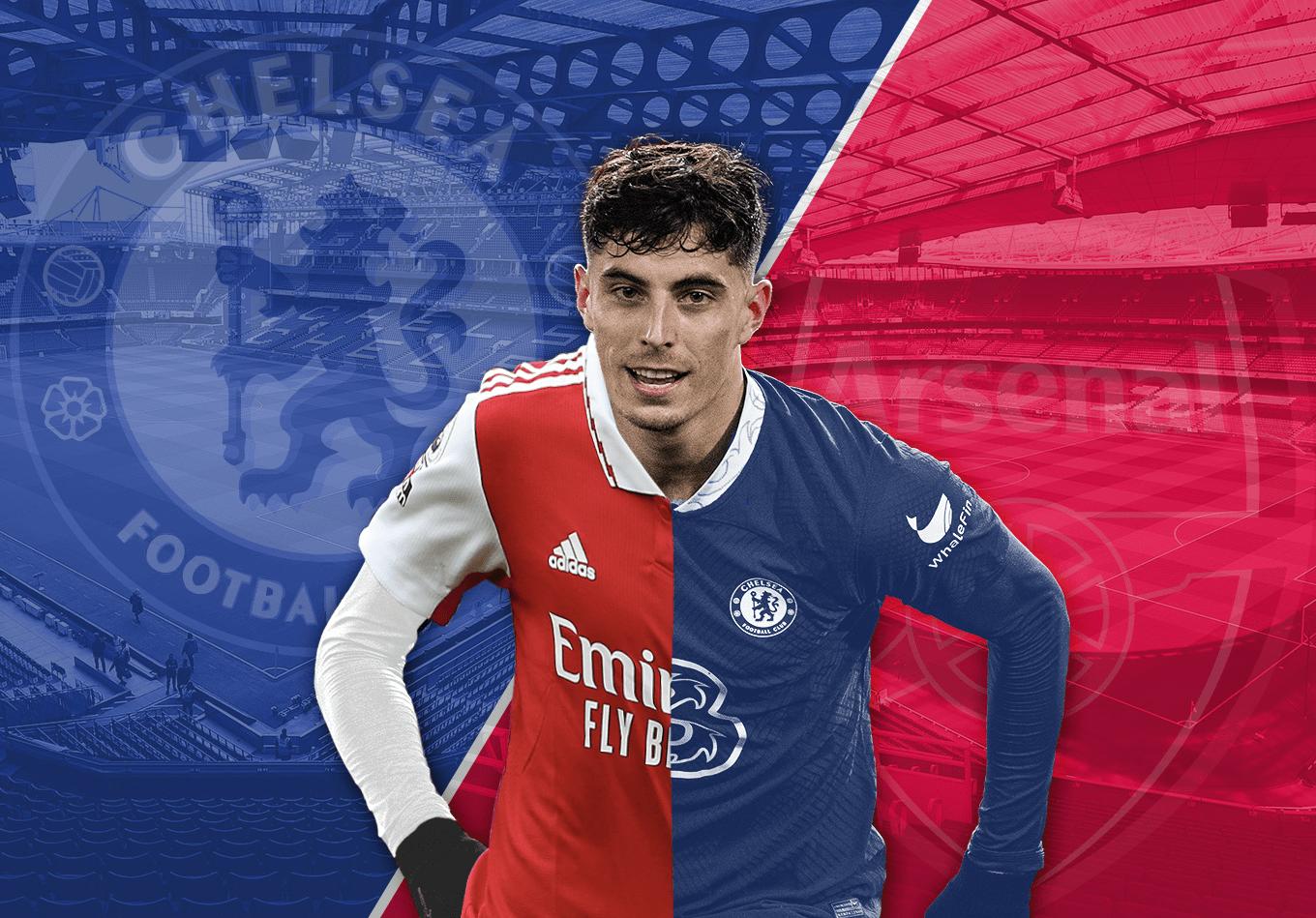Arsenal want Kai Havertz. Havertz wants Arsenal.
It’s easy to understand why the German is interested in a move away from the basket case that was Chelsea last season, but, on the surface at least, it’s less obvious why Arsenal are so keen on him.
After three years at Stamford Bridge, it’s hard to evaluate Havertz’s legacy at Chelsea. If he were to depart, he’d leave the club with a record of 32 goals and 12 assists from 139 appearances. There are some obvious highlights, notably his game-winning goals in the 2021 Champions League final and 2022 Club World Cup final.
Despite those big moments, there is definitely a sense he’s not hit the heights many thought he would at Chelsea after really impressing at Bayer Leverkusen.
At the reported fee of £65 million, it’s also not a cheap signing for Arsenal. Ignoring the possibility of Declan Rice for a moment, landing Havertz at that price would be Arsenal’s second most expensive signing in club history. And it would be one that bankrolls a direct rival in their pursuit of other players, namely Moises Caicedo – a player who Arsenal themselves have been heavily linked with.
Aside from that, perhaps the most muddling part of the transfer is the confusion over Havertz’s best position. It’s not really obvious where he plays. Is he a number nine, as Chelsea have deployed him for most of his time in west London? Or is he more of a number 10, a role in which he flourished in Germany?
But we’re probably asking the wrong question. “Where would he play for Arsenal?” is a logical thought, but the very fact there isn’t an obvious answer to that question is exactly the point.
Squad building for the big teams is no longer a case of ‘let’s get the strongest starting XI possible’. It’s changed to ‘let’s build the strongest squad possible’. With Arsenal in the Champions League next season, the schedule will be relentless, and if the 2022-23 drop-off proved anything it was that Mikel Arteta didn’t have the squad depth to battle Manchester City all the way to the title.
An acquisition of a player like Havertz immediately raises the standard of Arsenal’s squad. If City have shown anything it’s that to build a powerhouse unit you don’t just need an incredible starting XI, you need squad players who are just as good as those in the starting XI. Havertz’s versatility helps Arsenal too.
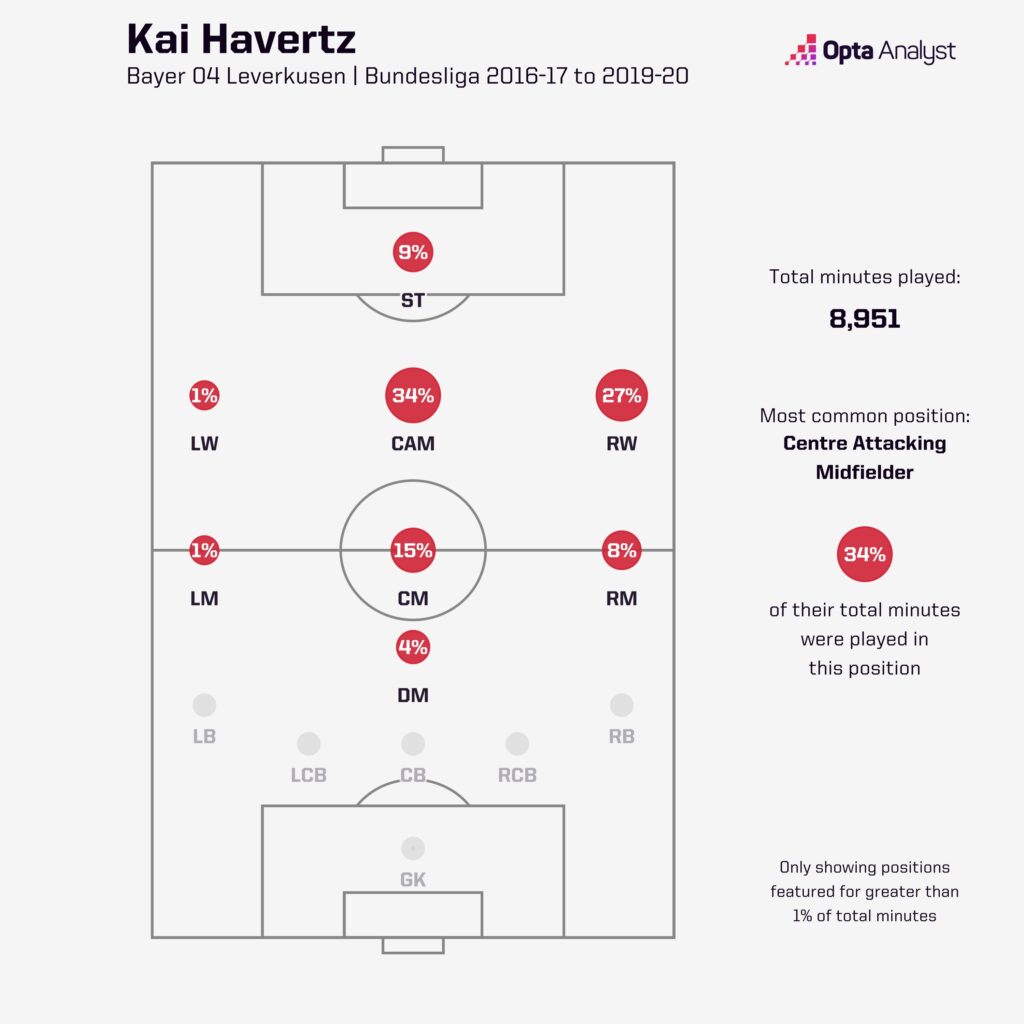
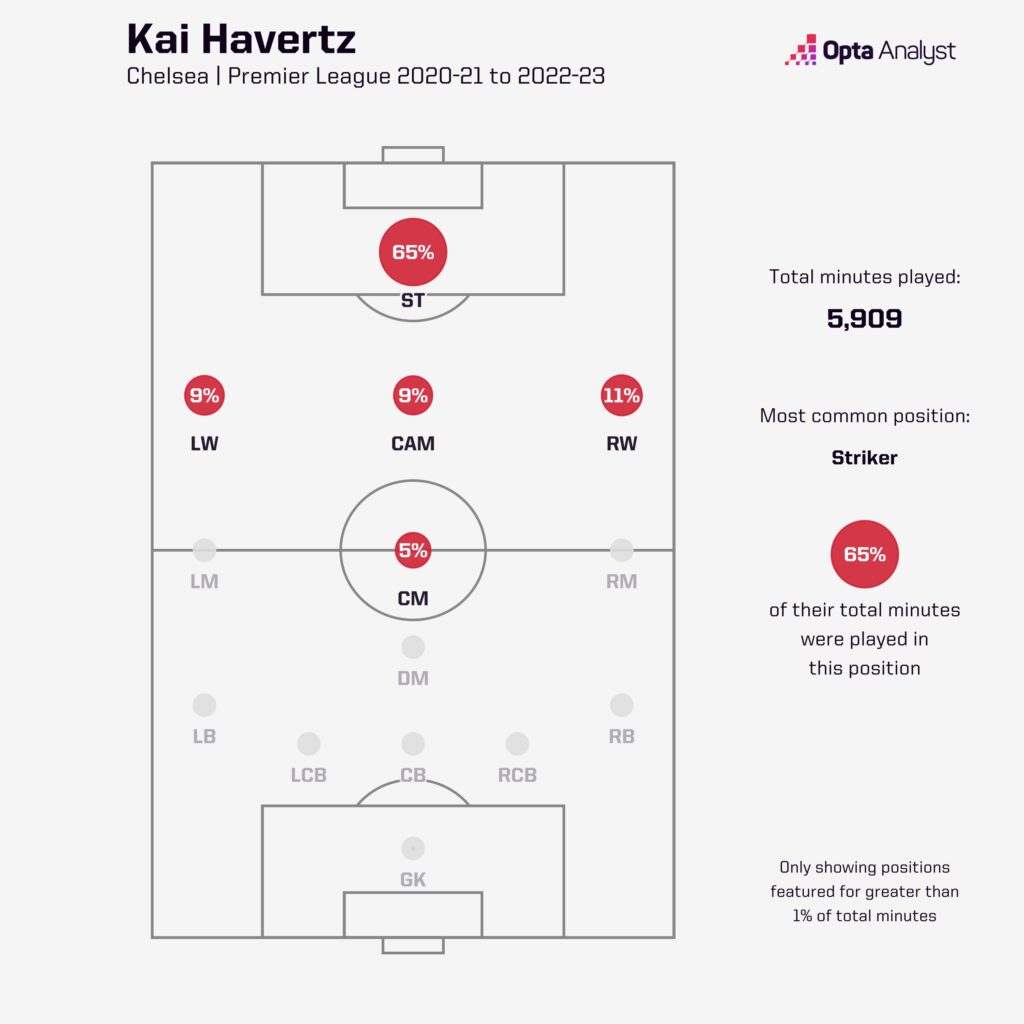
But let’s address the question anyway. Where would he play for Arsenal?
Havertz has mainly played up front as a number nine for Chelsea, playing 65% of his total minutes there across his three seasons. Deploying him there hasn’t really worked, as his raw output shows. He’s averaged 0.39 expected goals and 0.29 actual goals per 90 in the Premier League at Chelsea – both are the third-highest of any player there since his arrival – but they are not the types of numbers you need from your designated goalscorer.
But that was the problem. Havertz has been asked to play as an out-and-out striker for Chelsea, something he’s never been, and tasked with shouldering a lot of offensive responsibility. Frank Lampard, Thomas Tuchel, Graham Potter and then Lampard again were almost forced to play Havertz there, such was the lack of alternative options at their disposal. Timo Werner didn’t work out. Neither did Romelu Lukaku. Armando Broja has had injury problems. And the less said about Pierre-Emerick Aubameyang the better.
In his own words, Havertz says he’s “more or less a midfield player, but I like to go into the box”. In practice, the German is far more capable operating as a false nine, rather than a true nine.
You can envisage that scenario playing out for Arsenal, too, with Havertz dropping deep to link play and using his technical skills to play balls through to electric wingers Bukayo Saka and Gabriel Martinelli.
Or perhaps Arteta will find a way to accommodate him as a second striker, in the role he flourished at Bayer Leverkusen.
Or he might even deploy him as one of his number eights in midfield. The point is that Havertz’s technical skills enable him to play across the pitch in a number of roles. His positional map above from his time in Germany shows that.
Wherever he gets used, Havertz’s comfort on the ball and ability to link with runners around him is a strength. Only two players who played predominantly as strikers last season (Harry Kane and Leandro Trossard) created more chances in open play than Havertz’s 33, and the same pair were the only two players to complete more passes into the area. Only Danny Welbeck (82.9%), Julián Álvarez (80.7%) and Roberto Firmino (79.5%) had a better passing accuracy under pressure among all strikers than Havertz’s 78.1%, showing his ability to link play in the final third in tight spaces.
At 6-foot-2, he does also offer an aerial threat in the box that Arsenal do not currently have. Havertz is not a traditional target man, but he has the strength to win duels and bring others into play. As pointed out by Billy Carpenter, if you strip defenders out of the analysis, only three players won more aerial duels than Havertz (79) in the Premier League last year (Tomáš Souček 114, Ivan Toney 109 and Aleksandar Mitrović 100). Havertz’s success rate of 57.2% was greater than all of them.
Perhaps his best work is done off the ball, though. Havertz has excellent movement, a fantastic sense of space and is able to time his runs into the box perfectly to get on the end of crosses and pullbacks.
During his time at Bayer Leverkusen, it felt like he scored the same goal on repeat.
Leverkusen would break down one of the channels…
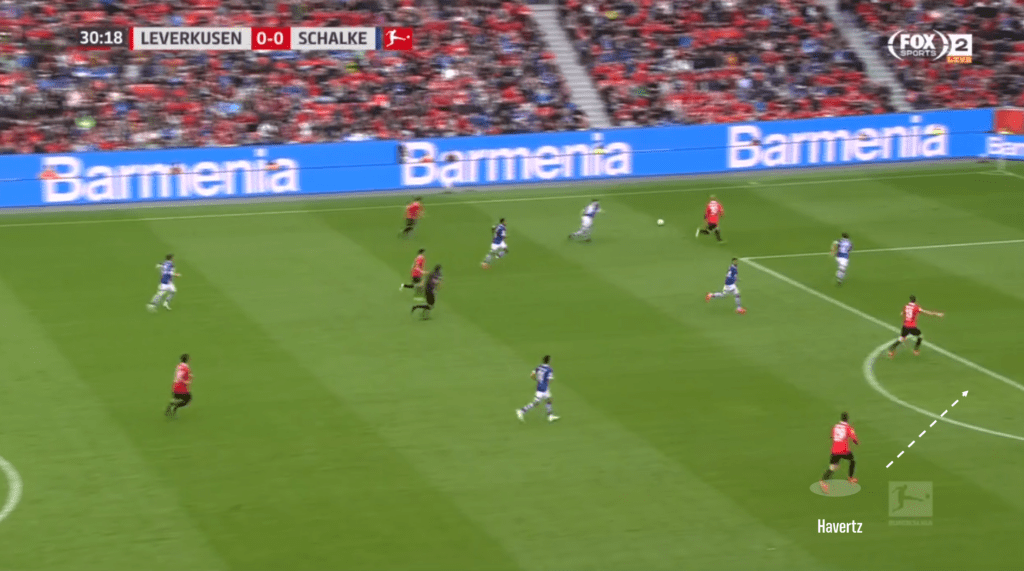
… and Havertz would ghost into space, arriving late in the box to finish.
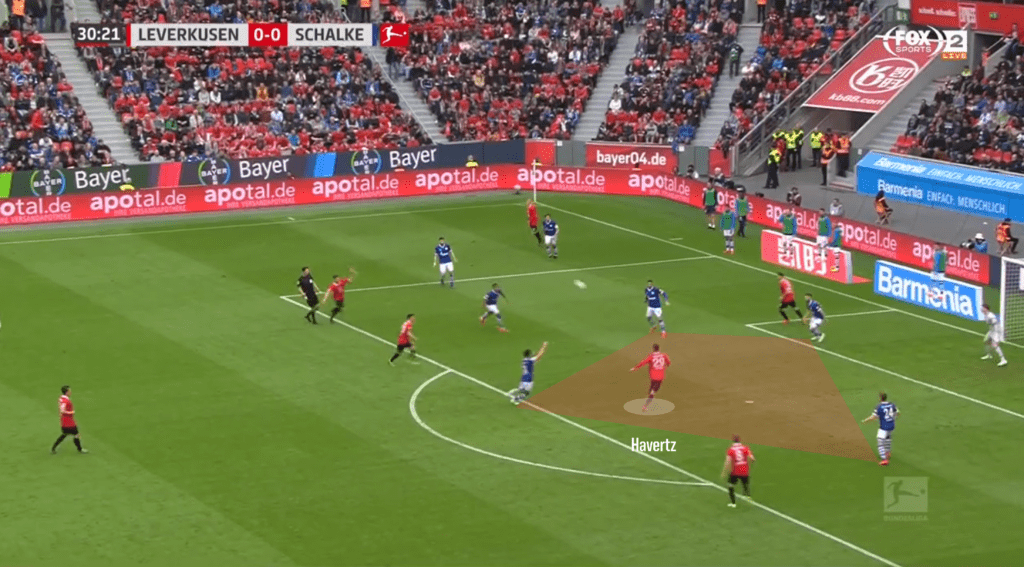
For this goal against Mainz, Havertz is already calling for the ball and Julian Brandt hadn’t even touched it yet. We all know what’s coming…
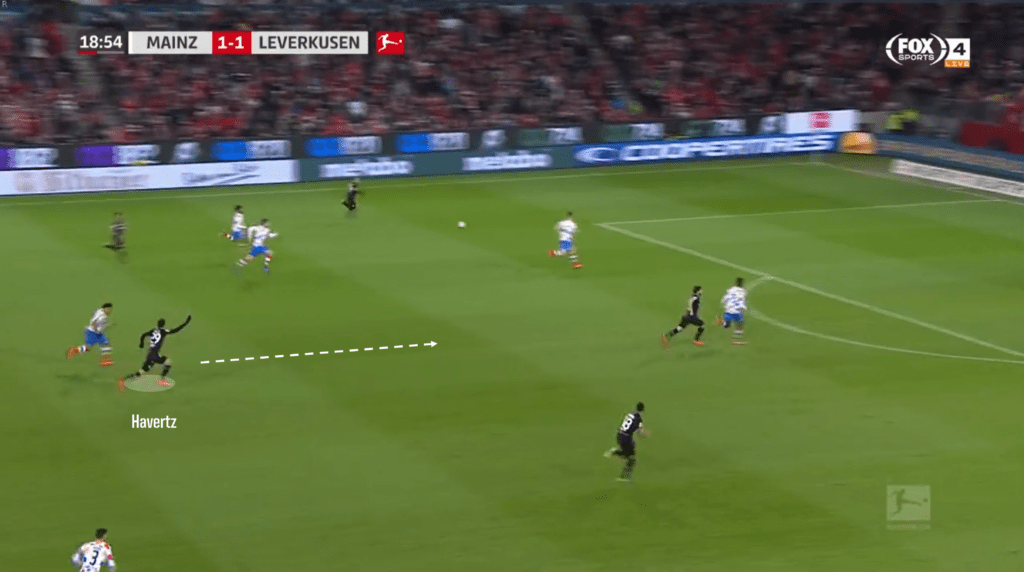
Havertz’s pace allows him to outrun his trailing marker before he arrives late into the box in acres of space to sweep home…
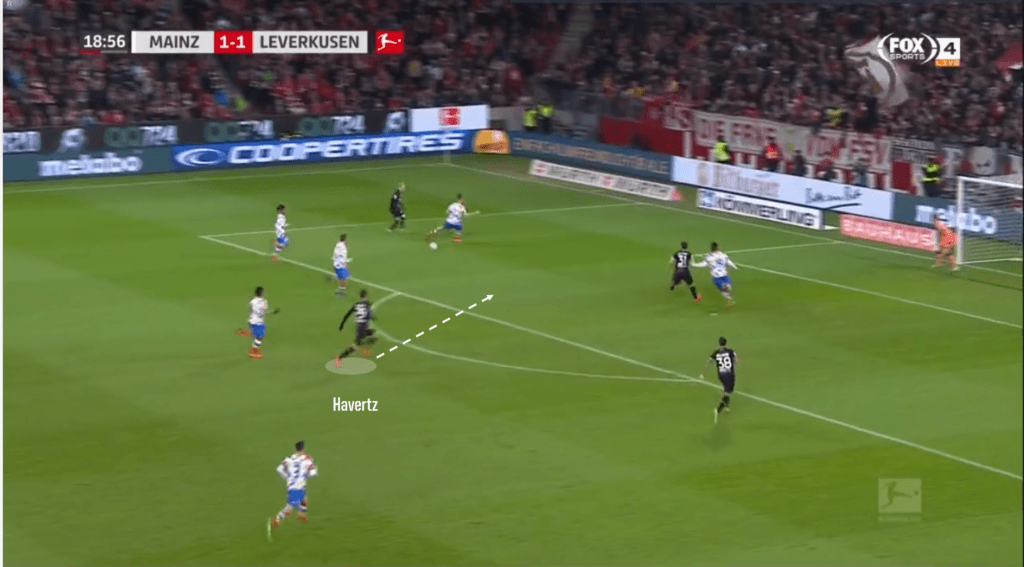
Making penetrative runs into the attacking third is a trait he’s still exhibited at Chelsea, even as recently as last season.
Last campaign, the German ranked in the top two or top three for a whole array of running stats. Targeted runs are defined as simply any off-ball run that is targeted by a teammate with a pass.
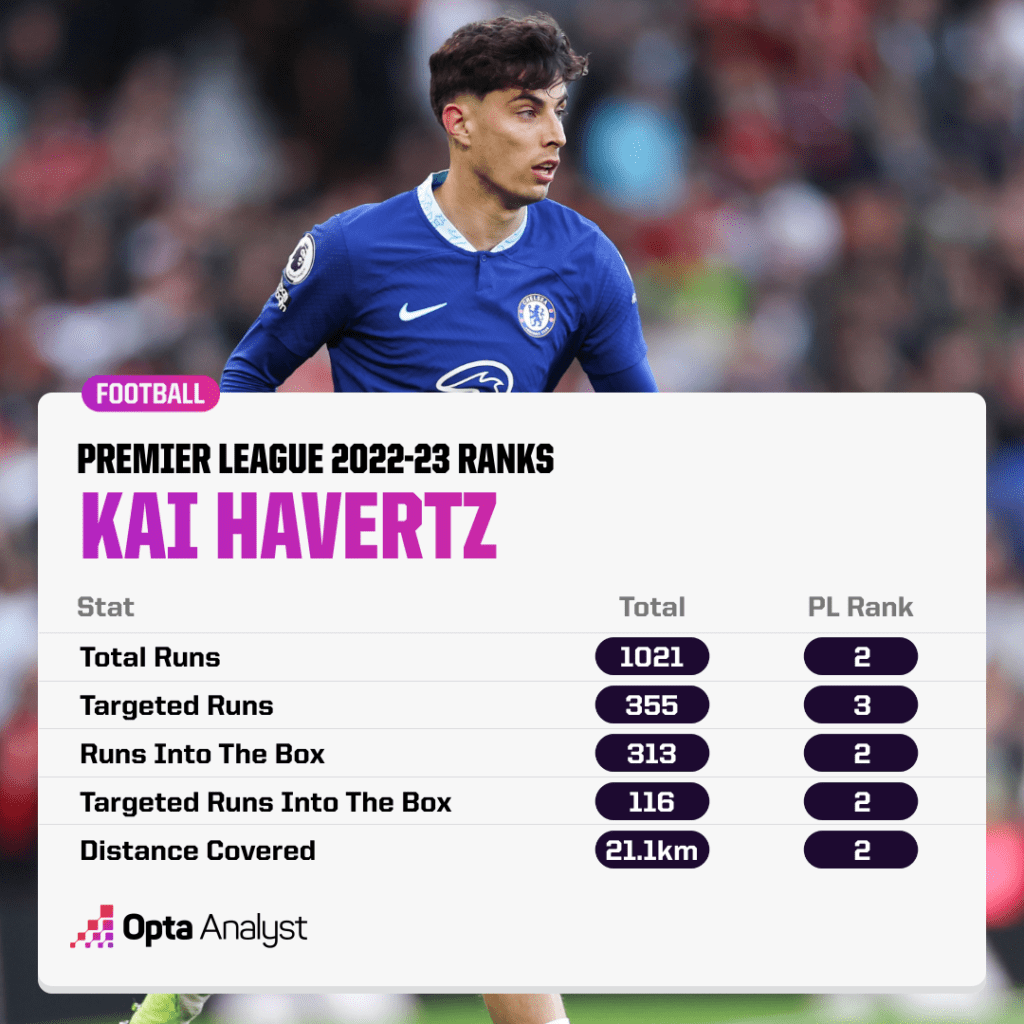
You can easily picture him arriving late into the box from a Saka or Martinelli cut-back to finish.
Out of possession, Havertz also offers Arteta an effective means to press from the top. Among Chelsea players last season, only the effervescent Conor Gallagher made more pressures per 90 than Havertz’s 26.7. If you narrow down the list to forwards, only Erling Haaland and Dominic Solanke made more pressures per game in the final third.
We’ve not even mentioned his age. Havertz only recently turned 24 and would continue Arsenal’s strategy of buying young talent right before they hit their prime years.
Twenty-four-year-old internationals with Premier League and Champions League experience aren’t available very often. When they are, you need to pounce. It looks like Arsenal are doing just that.
Who were the most similar players to Kai Havertz across 2022-23? You can find this out, plus analyse thousands of other players in the new Opta Player Comparison tool.
Enjoy this? Subscribe to our mailing list to receive exclusive weekly content. And follow us on Twitter too.
